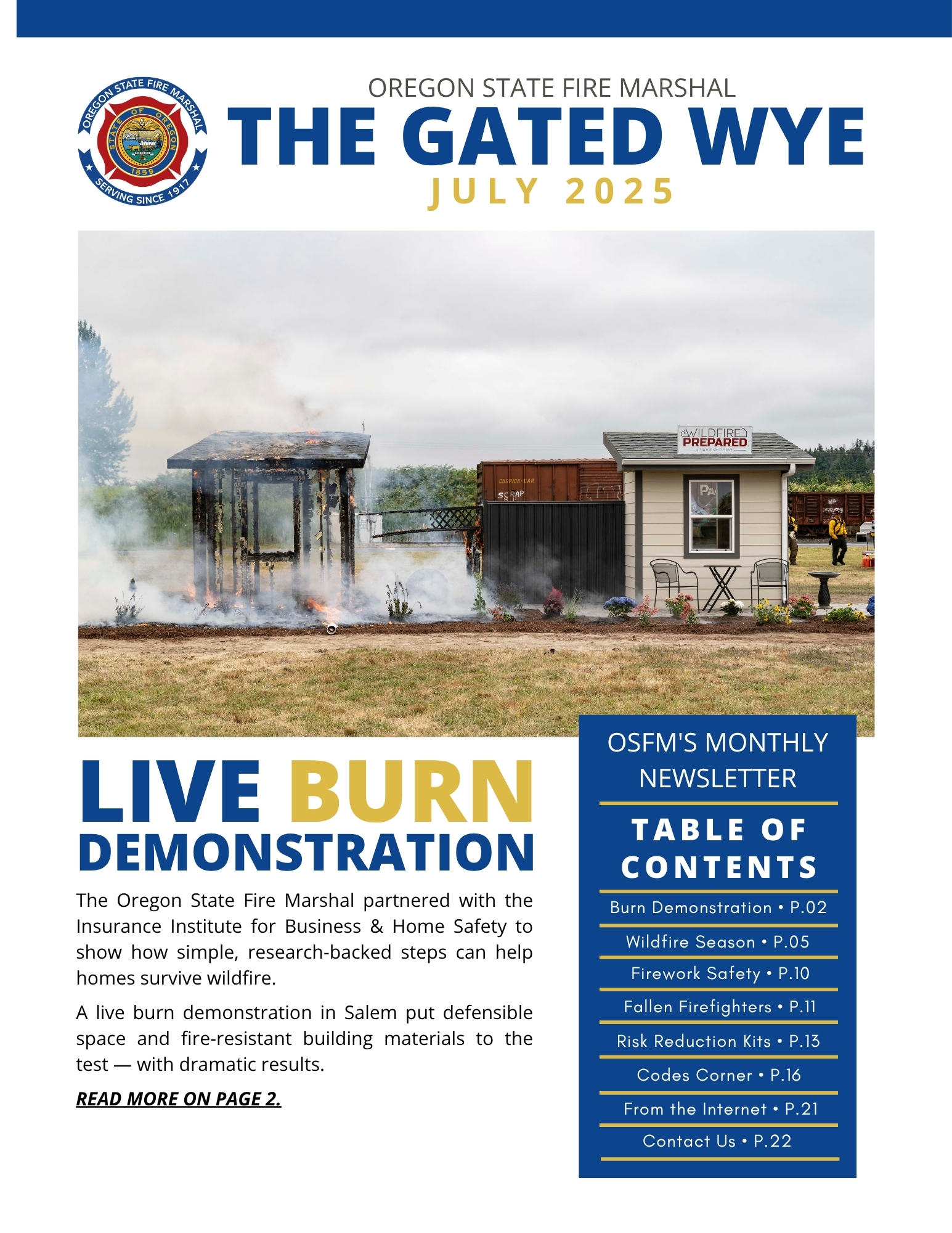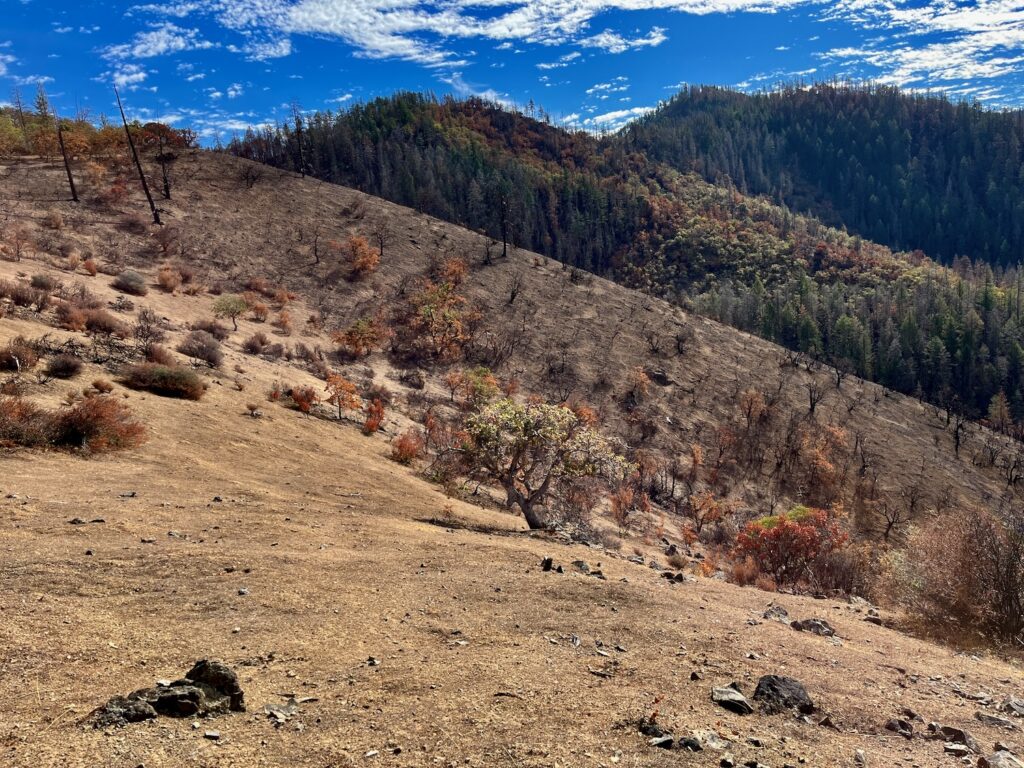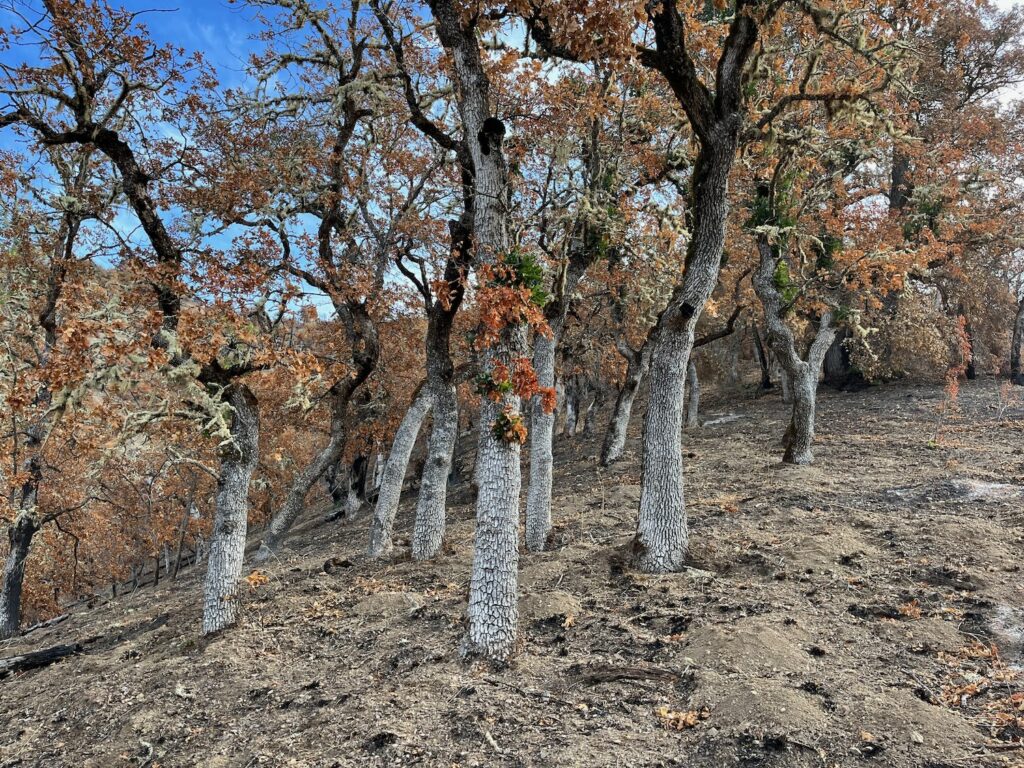The Upper Applegate Fire, a significant event for communities in Southern Oregon, has truly captured the attention of many, and for good reason. When we talk about "upper," it often brings to mind something higher up, a position of prominence, or perhaps a challenging elevation, which in this case, certainly describes the terrain where this fire has been active. Understanding what this fire means for the region, and how it has progressed, is very important for local residents and anyone watching these events unfold. It's about knowing the facts, like where it started, how it grew, and the incredible efforts made to bring it under control.
This fire, which has impacted the beautiful Applegate Valley, has seen fire agencies and local authorities working tirelessly. It's a situation that, in a way, tests the resilience of both the landscape and the people who call this area home. We want to share what has been learned about this event, from its initial ignition to the remarkable progress made in containing it, so you can have a clearer picture.
For those living near the Applegate Reservoir, or in towns like Ruch and Jacksonville, the presence of such a fire brings with it a host of concerns. Smoke rising from the area, for instance, can be a stark reminder of the challenges faced. This article aims to bring together the details, offering a comprehensive look at the Upper Applegate Fire and the dedicated response that has helped manage its spread.
- Does Larenz Tate Have A Brother
- Lipton Ice Tea Peach
- Laura Savoie Naked
- Transit Sun Conjunct Pluto
- Violet Mitchell
Table of Contents
- Fire Ignites and Spreads
- The Battle for Containment
- Resources and Response
- Community Impact and Safety
- Lessons Learned and Looking Ahead
- Frequently Asked Questions About the Upper Applegate Fire
Fire Ignites and Spreads
The Upper Applegate Fire, an event that certainly caught many off guard, began on a Thursday, June 20. It sparked in Southern Oregon, in the Applegate Valley, a place known for its natural beauty. Early reports indicated it was burning southwest of Medford, which, you know, gives you a sense of its general whereabouts. This fire, quite surprisingly, grew quickly, reaching about 350 acres by the afternoon of June 18, according to the Oregon Department of Forestry. That's a pretty swift increase in size, wouldn't you say?
Investigators later determined the cause was something rather common, yet very impactful: someone mowing dry grass. This detail, provided by the Oregon Department of Forestry's Southwest Oregon District, really highlights how easily these situations can start, especially with dry conditions. The fire, which, you know, was located between Ruch, Jacksonville, and the Applegate Reservoir, posed a significant challenge due to its location.
As the days passed, the fire continued to present difficulties for crews. It was estimated at 500 acres on a Friday morning, burning on terrain that was described as extremely steep. This kind of ground, in a forest south of Jacksonville, makes the work of firefighters very, very tough. A photo posted on Facebook on Wednesday, June 18, 2025, showed smoke visibly rising from the fire in Jackson, a rather stark image that conveys the situation.
By early on the morning of June 21, 2024, the Upper Applegate Fire was still burning, requiring constant attention. Crews were intensifying night burns, which is a tactic used to help control a fire's spread. At one point, they were holding it at under 1,000 acres, which, for a fire of this type, is a notable achievement given the conditions. This effort shows just how much dedication goes into managing these events, keeping them from becoming even larger.
The Battle for Containment
The fight to contain the Upper Applegate Fire was a consistent, ongoing effort. Firefighters were, in a way, constantly working to establish lines around the blaze, aiming to stop its growth. At one point, crews managed to increase the direct line around the fire to 70%, leaving only 30% indirectly lined, which, you know, is a good sign of progress. This happened overnight, showing the round-the-clock commitment.
The Oregon Department of Forestry Southwest Oregon District later announced that the fire was 100% lined and 35% mopped up. "Mopping up" involves extinguishing hot spots and embers, making sure the fire doesn't flare up again. This level of completion means a significant portion of the work was done, securing the perimeter and addressing internal hot spots. It's a rather thorough process.
Ultimately, the fire's final size was recorded as 1,143 acres. This figure, while substantial, represents the total area affected before it was fully contained. The Oregon Department of Forestry has, in fact, confirmed that lines were established around 100% of the Upper Applegate Fire, a testament to the hard work of all involved. This means the fire was fully encircled, preventing further spread.
A year after the Upper Applegate Fire burned those 1,100 acres, and cost about $7.2 million, a similar blaze in the same area was held to 468 acres. This reduction in size for the later fire was, apparently, thanks to early staffing and proactive land management efforts. It seems that, in some respects, lessons learned from the initial Upper Applegate Fire helped improve response times and strategies for future events.
Resources and Response
When the Upper Applegate Fire began to grow, the response was immediate and well-coordinated. The Oregon State Fire Marshal, for instance, mobilized two structural task forces. These teams came from Lane and Marion counties, showing a broad regional effort to assist Jackson County. Their rapid deployment is a critical part of managing such emergencies, getting skilled personnel and equipment to the scene quickly.
Responding fire agencies, which, you know, included various local and state organizations, utilized multiple resources. This means they brought in a variety of equipment and personnel, all working together to slow the fire's advance. The coordination required for such an operation is quite extensive, ensuring everyone is working toward the same goal. It's a complex dance of strategy and execution.
Fire crews were on site constantly, working day and night. Overnight shifts were particularly important for increasing the direct line around the fire, as mentioned earlier. This continuous effort is, actually, a standard practice in wildfire suppression, allowing firefighters to take advantage of cooler temperatures and higher humidity to make progress. It's a demanding job, requiring immense stamina and focus.
The photo shared by the ODF Southwest Oregon District Facebook page, showing crews intensifying night burns to control the fire, really highlights the dedication. Holding the fire at about 350 acres with minimal growth on a Wednesday evening, as reported by the Oregon Department of Forestry, was a direct result of these intensive efforts. This kind of sustained pressure helps prevent smaller fires from becoming much larger, more devastating events.
Community Impact and Safety
The Upper Applegate Fire, like any significant wildfire, had a direct impact on the local community. When the fire grew to 350 acres, for example, Level 3 evacuation orders were issued. A Level 3 order means "Go Now," urging residents to leave immediately due to imminent danger. This is a very serious step, taken to ensure the safety of people in the path of the fire, and it means people must move quickly.
The fire was burning in southern Oregon's Applegate Valley, a place where many families live and work. The need to evacuate can be incredibly disruptive, causing stress and uncertainty for those affected. It's about protecting lives first and foremost, even if it means leaving homes behind temporarily. The sight of smoke rising, as seen in that Facebook photo, can be a stark reminder of the danger present.
Even as firefighters made progress, caution remained important. Upper Applegate and Little Applegate roads were, in fact, eventually reopened to all traffic. However, authorities urged people to use caution when traveling around the fire area. This is because firefighters continued to work in the area, meaning there could be equipment, personnel, or lingering hazards on the roads. It's a reminder that even after the immediate danger passes, the recovery and cleanup work continues.
The experience of a wildfire, from the initial ignition to the eventual containment, can be quite unsettling for a community. It calls for quick decisions, trust in emergency services, and a collective effort to support one another. The fact that roads reopened, but with a plea for caution, really shows the ongoing nature of managing the aftermath of such an event, ensuring everyone stays safe while recovery efforts are underway.
Lessons Learned and Looking Ahead
The Upper Applegate Fire, in a way, provided important lessons for fire management in the region. The fact that a similar blaze a year later was held to a much smaller size, 468 acres compared to the Upper Applegate Fire's 1,100 acres, speaks volumes. This improvement was, apparently, thanks to early staffing and proactive land management. It suggests that quick action and preparing the land can make a significant difference in how fires behave.
The cost of the Upper Applegate Fire, which was about $7.2 million, also highlights the immense financial burden that wildfires place on resources. This figure, you know, covers the operational costs, equipment, and personnel needed to fight such a large blaze. Reducing the size of future fires not only protects communities and natural areas but also helps save considerable public funds, which is a good thing.
The continued work by agencies like the Oregon Department of Forestry and the Oregon State Fire Marshal is, in fact, vital for community safety. Their ability to mobilize resources, establish lines, and coordinate efforts across counties shows a strong commitment to protecting the state's natural landscapes and its residents. It's a constant effort to adapt and improve strategies based on past experiences, ensuring readiness for future challenges.
Moving forward, staying informed about wildfire risks and preparedness measures remains key for residents in Southern Oregon. Understanding how fires start, like the mowing of dry grass in this case, can help prevent similar incidents. It's about collective awareness and responsible practices, working together to keep communities safe. To learn more about wildfire safety on our site, and to link to this page emergency preparedness, you can find valuable information. You can also visit the Oregon Department of Forestry website for more details on their ongoing efforts and resources.
Frequently Asked Questions About the Upper Applegate Fire
What caused the Upper Applegate Fire?
Investigators, according to an update from the Oregon Department of Forestry's Southwest Oregon District, determined that the cause of the Upper Applegate Fire was someone mowing dry grass. This detail, you know, really points to how easily such an event can begin, especially in dry conditions.
How large did the Upper Applegate Fire get?
The Upper Applegate Fire grew to over 300 acres initially. It was later estimated at 500 acres on a Friday morning and was held at about 350 acres with minimal growth on a Wednesday evening. Ultimately, the fire's final recorded size was 1,143 acres, which, you know, is quite a considerable area.
Where is the Upper Applegate Fire located?
The Upper Applegate Fire was burning in Southern Oregon, southwest of Medford, in Jackson County. More specifically, it was located between Ruch, Jacksonville, and the Applegate Reservoir, in the Applegate Valley. This area is known for its steep terrain and forested regions, making firefighting efforts quite challenging.



Detail Author:
- Name : Lorna Cartwright
- Username : wayne52
- Email : asha.smitham@yahoo.com
- Birthdate : 1993-03-03
- Address : 1023 VonRueden Radial Suite 683 Hayleyberg, WI 13327-9654
- Phone : +1.424.277.3586
- Company : Tremblay, Crooks and Hoeger
- Job : Gas Plant Operator
- Bio : Nisi quia nam architecto perferendis est eaque. Sed nostrum amet quia sint veritatis minima nostrum. Quos deserunt et dolorem perspiciatis ex expedita molestiae. Fugit magnam vitae esse.
Socials
facebook:
- url : https://facebook.com/hanna.ward
- username : hanna.ward
- bio : Id sit repellendus autem fugit totam praesentium repudiandae fugiat.
- followers : 1223
- following : 789
instagram:
- url : https://instagram.com/hward
- username : hward
- bio : Quasi quia dignissimos officiis rem. Qui blanditiis rerum consequatur dolor reiciendis saepe.
- followers : 3246
- following : 1005
twitter:
- url : https://twitter.com/hward
- username : hward
- bio : Et repellat facilis tenetur corrupti sunt dolorum. Odio qui voluptatem et consequatur. Labore unde aut maxime nemo deserunt officiis esse.
- followers : 3323
- following : 2820